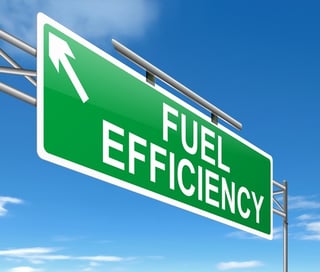New Standards for Greenhouse Gas, Fuel Efficiency
published on June 01, 2017 by Sonia Mastros
fuel efficiency, school bus fleet, fuel management
 New standards for medium and heavy-duty commercial vehicles, which includes school buses, were designed to improve fuel efficiency and decrease pollution. Both the Environmental Protection Agency and the National Highway Traffic Safety Administration issued these standards that were called for by the President’s Climate Action Plan.
New standards for medium and heavy-duty commercial vehicles, which includes school buses, were designed to improve fuel efficiency and decrease pollution. Both the Environmental Protection Agency and the National Highway Traffic Safety Administration issued these standards that were called for by the President’s Climate Action Plan.
Updated Environmental Standards for School Buses
This second-phase program encourages the wider use of available technology, along with the development of new technology that reduces the environmental impact of school buses and other large vehicles. These standards were designed to lower CO2 emissions by over 1 billion metric tons and lower fuel costs by around $170 billion. These standards apply not only to school buses but to semi-trucks, large pickup trucks, and vans from model year 2021-27.
Exhaust from school buses has long been an environmental concern. For this reason, many school districts have made the switch to or have implemented actions that reduce idling and unnecessary miles on the road. The EPA and NHTSA estimate that once phased-in, these updated standards will reduce CO2 emissions and fuel consumption by nearly 25 percent compared to the first phase. The agencies project that with improvements that reduce idling, improve engine and transmission performance, and apply updated hybrid technology there will be a substantially reduced environmental impact. As school bus manufacturers continue to develop safer and more technologically advanced vehicles, these standards encourage environmentally-friendly innovation.
Technology Changes the Face of School Bus Transportation
New technologies are making a big impact on fuel management for transportation departments around the country. Along with mechanical technology, software is helping school districts to keep costs down and reduce the environmental impact of school buses. School bus routing software is being used to increase fuel efficiency and develop routes that are safe for students. Optimizing bus routes reduces idling, minimizes unnecessary stops, and ultimately saves fuel.
To learn more about the technology that school districts like yours are using to ensure fuel management and reduce carbon emissions, contact the transportation professionals at BusBoss. We offer a wide selection of technological options that will keep students safe while optimizing the performance of your school bus fleet.
What measures has your school district’s transportation department taken to ensure optimal fuel management? Has optimizing school bus routes helped to minimize your fuel budget? We appreciate your feedback.



